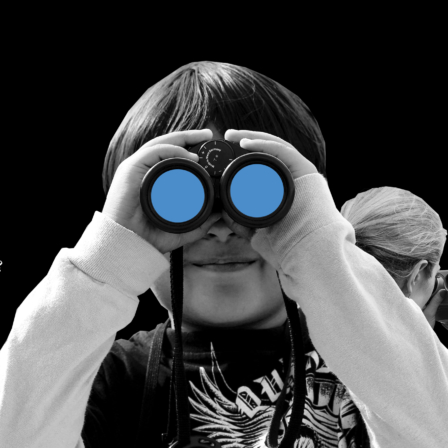A weak signal is an indication of an emerging issue or an early sign of a change that may be meaningful in the future (Hiltunen 2010). Recognising weak signals supplements and challenges the understanding of future developmental paths based on trends.
The characteristics of weak signals are as follows.
- Novelty: a weak signal is an indicator of something new or a new perspective on a known subject.
- Surprising: a weak signal is surprising to its interpreter.
- Challenging: a weak signal forces one to challenge existing assumptions and is therefore often difficult to detect or easy to overlook.
- Significant: a weak signal suggests something that may have an impact on the future.
- Delay: a weak signal describes something that is not yet significant but requires time to mature.
Similar concepts to weak signals include silent signals, seeds of change and advance warning indicators. Occasionally, wild cards and black swans are also associated with weak signals. However, they are more about a sudden event or phenomenon that may have generated weak signals.

Signal /Observation filter / Observation / Interpretation filter / Interpretation /Power filter / Action
Detecting, interpreting and using signals are affected by our thinking models and different types of “filters” (see the figure above: Ilmola 2014).
- The first step in identifying weak signals is to keep one’s senses and mind open to surprises. This also requires one to challenge one’s own assumptions and views, since we usually recognise those signals that already fit our world view. In principle, weak signals can be detected anywhere, although the front pages of newspapers are not the best hunting grounds for weak signals. Good sources include, for example, the Twitter accounts of futures researchers, different types of exhibitions and conferences and even holiday travel. It is good to collect many signals and from many different sources, because the most interesting things are often found on the periphery of and in combinations of existing categories.
- The second step is the interpretation and expansion of the signals. This includes considering the potential impacts and combining them with other signals and megatrends. Therefore, signals should be thoroughly considered from start to finish – the road they indicate should be followed as far as possible. In addition to the direct impacts, it is necessary to consider the indirect impacts and the links between different impacts.
There is a conflict between the two steps above, which is typical for weak signals. On one hand, it is necessary to collect a wide and diverse group of signals, but, on the other, it is important to closely examine the impacts of the signals and link them to something that already exists. This is a balancing act between scope and depth, ambiguity and clarity.
Using the observed and interpreted signal is also associated with different types of interests regarding the future. What does one want to highlight, what should be ignored and what is considered relevant or beneficial? This power filter affects what signals are used.
Do the following
In groups, consider what thing, phenomenon or event has recently surprised you, astonished you or seemed far-fetched or unbelievable. It could be, for example, a form of technology, a regulation, a political action, a business model, some civic action, the results of a study, a product or service, an idea, an invention, experiment or opinion.
Write down your observations and compare to see if there are any common themes.
Select one theme or one signal and discuss what would happen if what it describes were to become a part of daily life. What would potentially happen next and what would the consequences be?
Based on the discussion, formulate a “What if…?” question, which will stimulate a new way of thinking.
Example
One group identified several signals, of which we thought the following were somehow related to one another:
- Saudi Arabia granted human rights to a robot
- Film stars are including details in their wills of how virtual versions of them can be used
- Robot strippers at the CES exhibition in Vegas
- Entertainment shows discuss artificial intelligence rights (e.g. Westworld, The Good Place, Black Mirror)
It became apparent in the discussion that all the signals were about how the increasing prevalence of artificial intelligence and robots, in addition to the increased use of digital platforms, are changing our perceptions of what humans are. It is increasingly common to think of humans as a mass of data and to give data masses or machines human-like traits.
The following questions were formulated based on the discussion:
- What if machines were commonly given human rights?
- What if the character and health of a person is defined based on the data available in the information networks?
Next: utilising weak signals
After the work, weak signals can be used to construct a vision that supplements trend analysis. Weak signals help one to recognise what types of surprises may occur along the way. “What if?” questions can also be used to challenge existing visions and to highlight their different aspects.






Latest